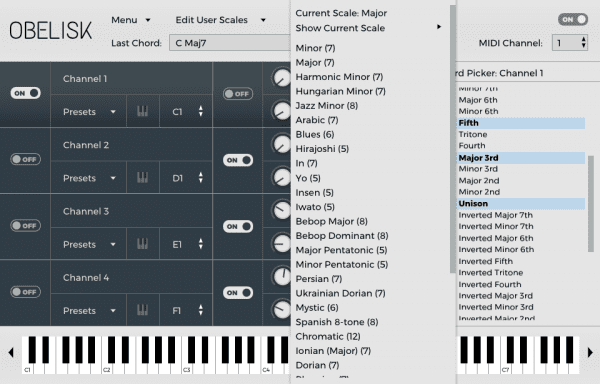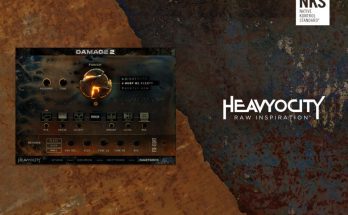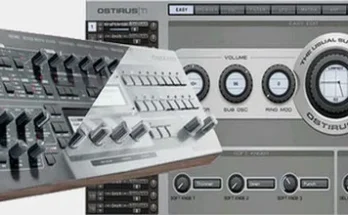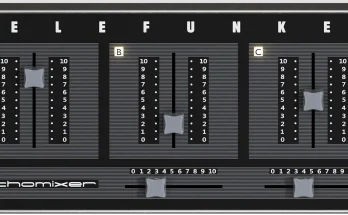Obelisk makes it easy to write chord progressions and explore new harmony to your melody lines. This plugin converts every MIDI note you play into a harmony that (optionally) matches the key and scale of your track.
Knowledge of music theory is not required. The harmony structure is created by selecting intervals on the right side of the graphical interface or by loading one of the many chord presets. By clicking a few notes on the keyboard, you can create a harmonious foundation for your new track. Obelisk works with any of your synthesizers or samplers. Just configure DAW to send MIDI from Obelisk to your synthesizer
Chords – For convenience and a start, Obelisk comes with a variety of chord and scale presets. Choosing chord presets is a quick way to try out different harmonies, and let your ear decide what works.
Unique scales – Obelisk can be customized to limit notes to a specific key and scale. When this option is enabled, you have many options for which gamma to use – in addition to the main and secondary ones. For example, blues, arabic, or variations of the pentatonic scale can be chosen. Learning unusual scales can take your music to uncharted places.
Turn a note into a chord – Each MIDI note you play in Obelisk starts creating a chord based on that note. The structure of this chord is determined by the Chord Picker, which is located on the right side of the graphical interface. This chord picker represents harmonies for any input note. For example, if “0: Unison” is selected, any note played will go unchanged. However, if you also choose the option: 7: Perfect 5th, Obelisk will add a note seven semitones above any input note. Now, if you add major 3rd, Obelisk will create a major triad chord based on any note played.
Within the key … – Using only one type of triad for your chords may not sound very well. It is more useful to use both primary and secondary triads that match the gamma you use. For this reason, Obelisk has a limiting algorithm that intelligently shifts notes to match the given key and scale. This limitation occurs after the chord is generated – as in the process described in the previous paragraph. The resulting MIDI is then sent to the synthesizer of your choice.




